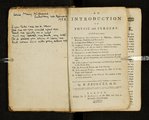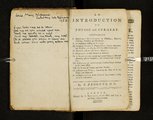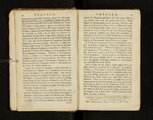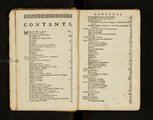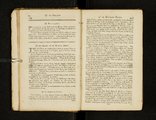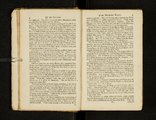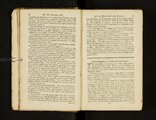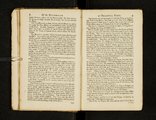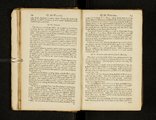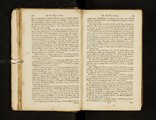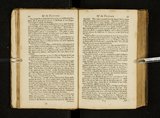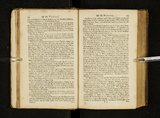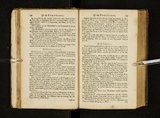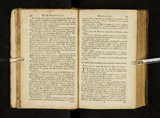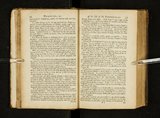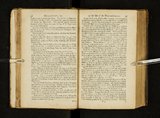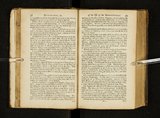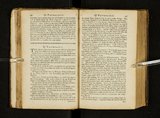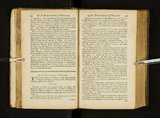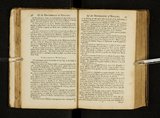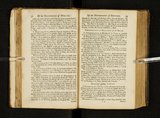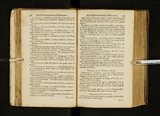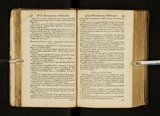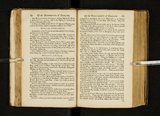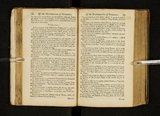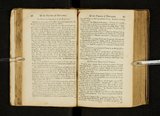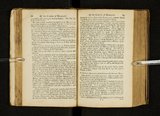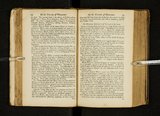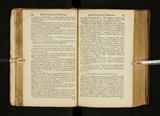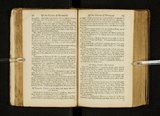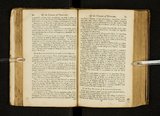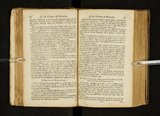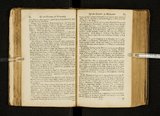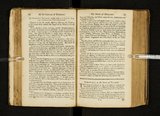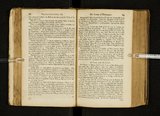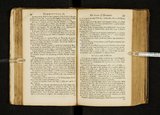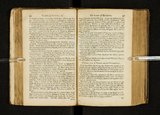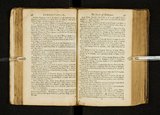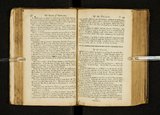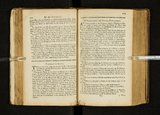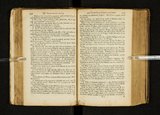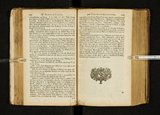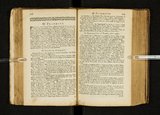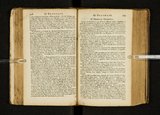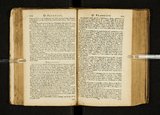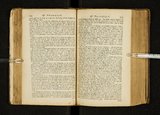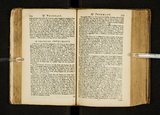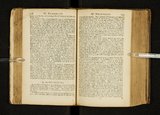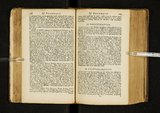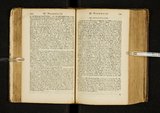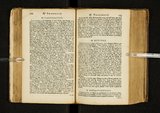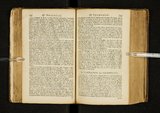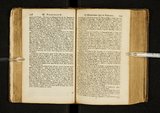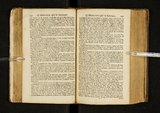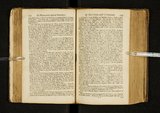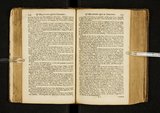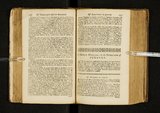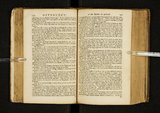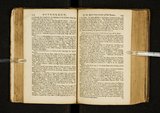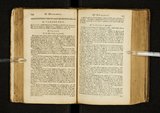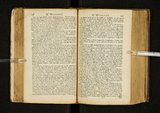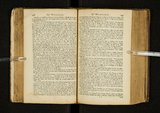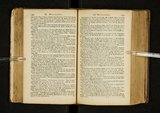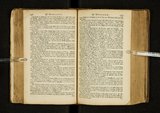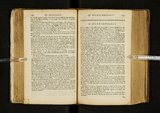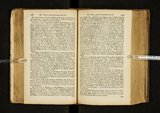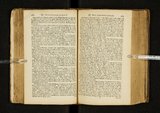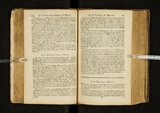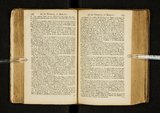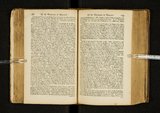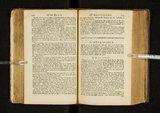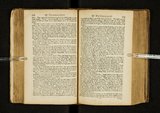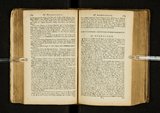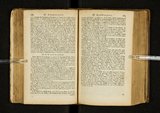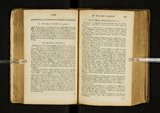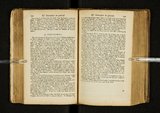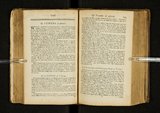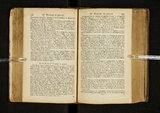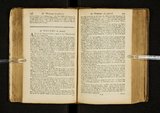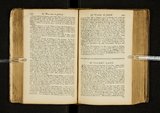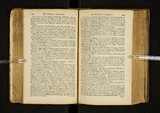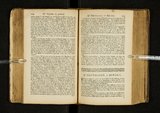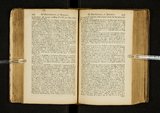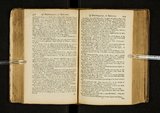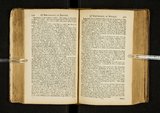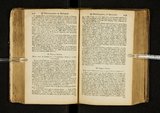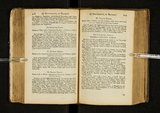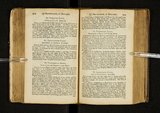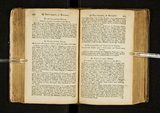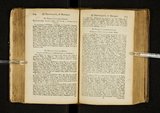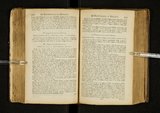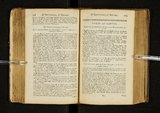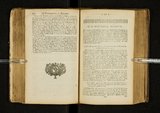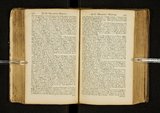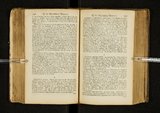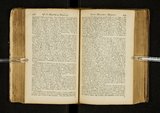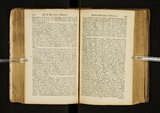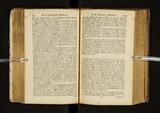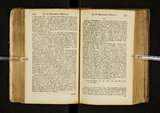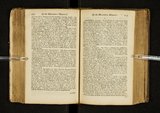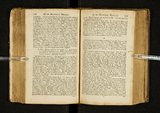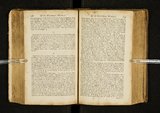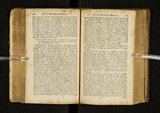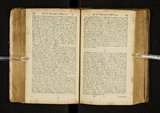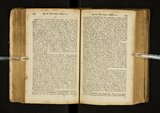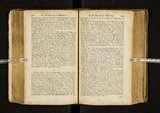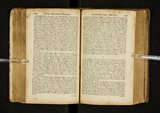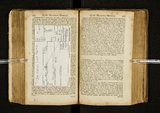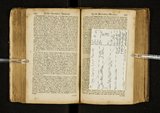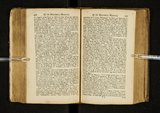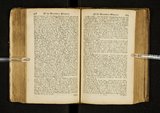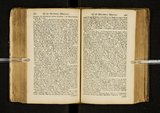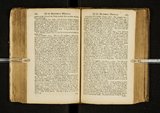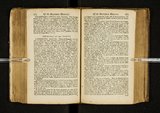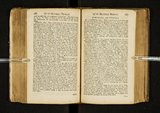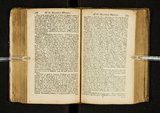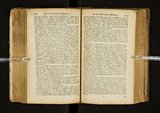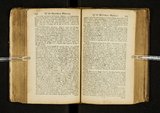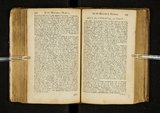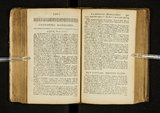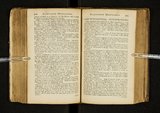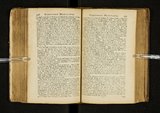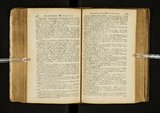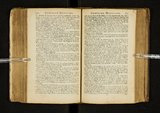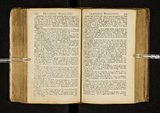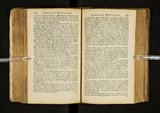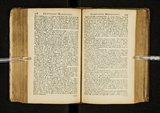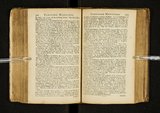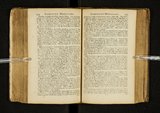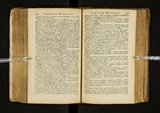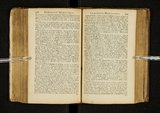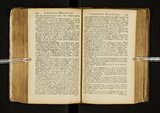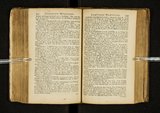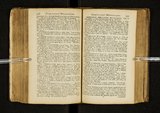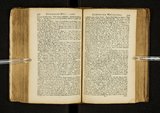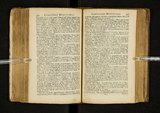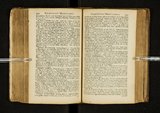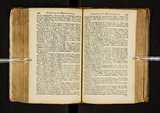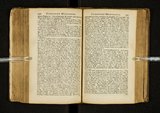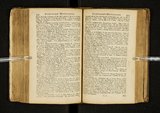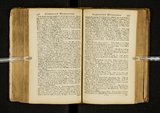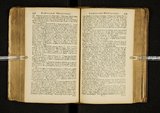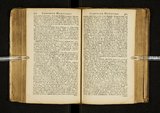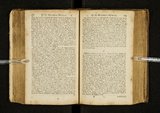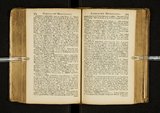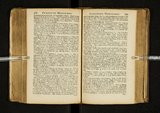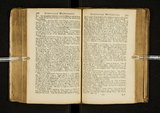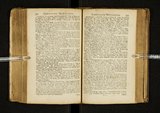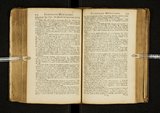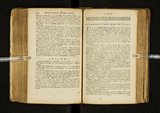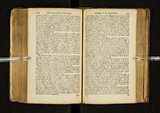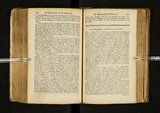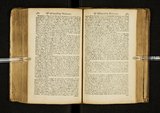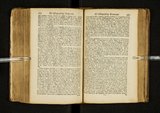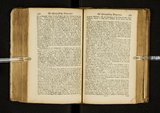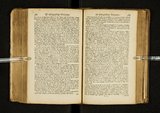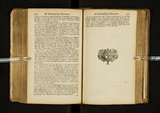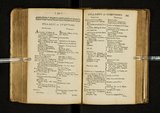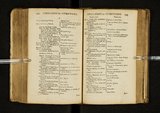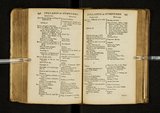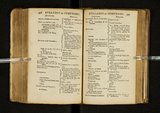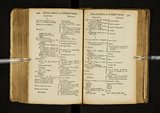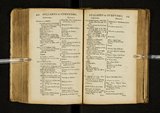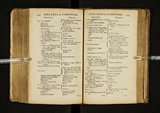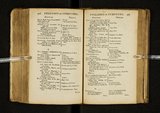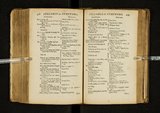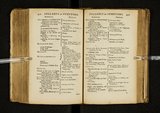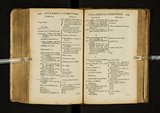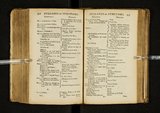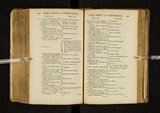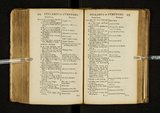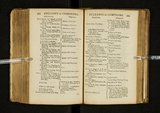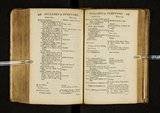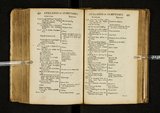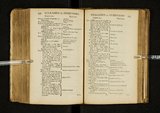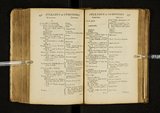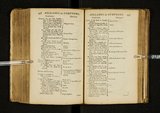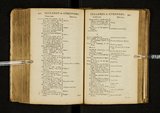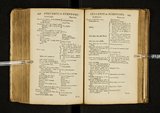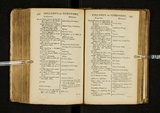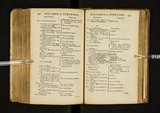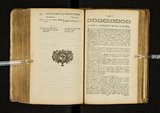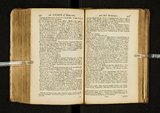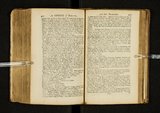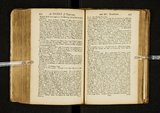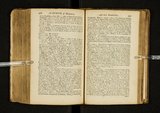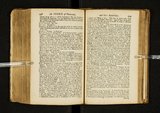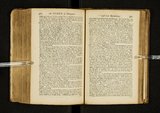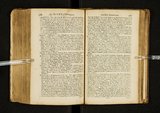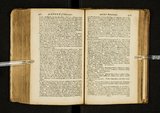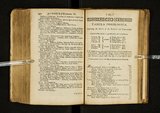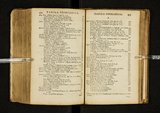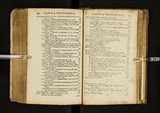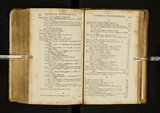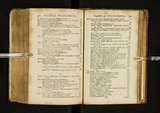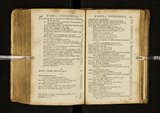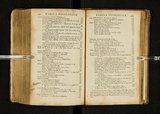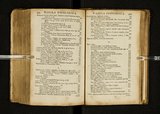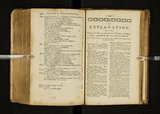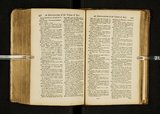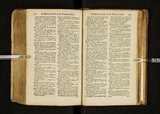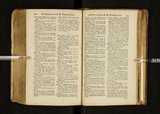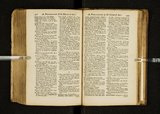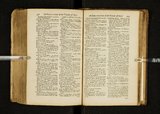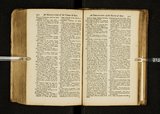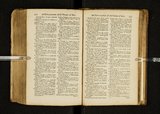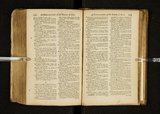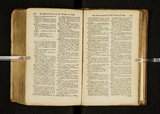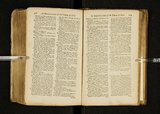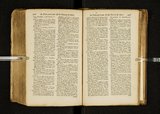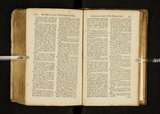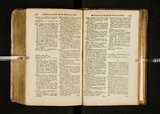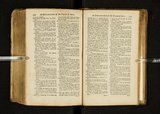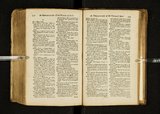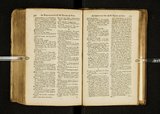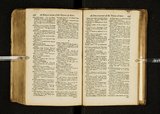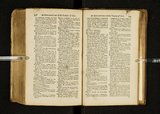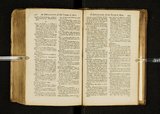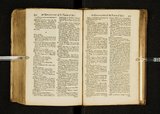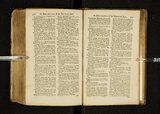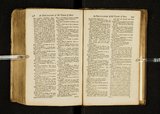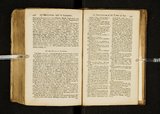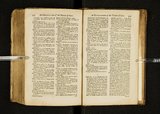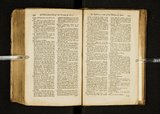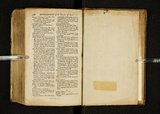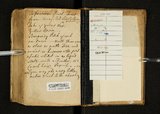| OCR Text |
Show 342 OSTEOLOGY; per Part are two l‘rocefl‘es for the lnfertions of the Mul'cles of the Arm, and two others at the lower End. '1 he CUBlT has two Bones, the U/mz and the Radiur. The Um, at the upper End has one large Proccfs called Olerramm : At the lower End is a Procefs named Sty/form}, and a round Head, which is received into the Rat/I'm, for the rotatory Motion of the Cuéz't The upper End or Head of the RADIUS is received into the Ulmz; a little below which is a large Tubercle, wherein the Biceps Mufcle is inferted. At the lower, which is thicker, is :1 Socket to receive the (‘arpm ; and at the Side next the U/Im, a {mall one to receive that Bone, and a thin Edge, into which the tranl‘verle Ligament, which arifes from the Ulna, is inlerted. The HAND is diftinguilhed into three Parts; the CARPUS or PIG-M, which is compofed of eight Bones of very irregular Forms : They liaise all obfcure Motions one With another; and the METACARPUS, this confills of four Bones, which {ultain the Fir/gen. The Ends nex' the Fit. GERS have round Heads for the Articulati. ns ofthe Fingers ; but the other Joints of the Fingers double Heads and Sockets. l‘he 712ml is articulated immediately with the r 'arpm. i he Fingers and Thumb in: each formed of three Bones, called P/aulangcr: On the Infide they are flat, and a little hollow. The lNFERIOR EXTREMITY is divided into the sz‘gb, the Leg, and the Foot. The Tiiicii has but one Bone, called 0: Fania-2‘5, and has around Head, which is received into the Socket of the O: Imamz‘mtum lt hfii two Procellbs near the Head. named the greater and the lefler Trot/mMrs, for the lnfertions of Muicles; and a Neck which lies between thefe and the Head fl/jiera. On the back Side is a lirong Ridge, called Linn: At the lower End are two large Heads, termed the outer and inner Alsop/ayes, between which the large Veflels defcend to the Leg, with Security. The LEG has two large Bones called the ‘Tz'c'zz‘a and Fibula, and one [mall named the Ram/a, Pare/[11 or Kneejmu: This is feated on the fore Part of the Knee, and ferves to fecure the Eaten/er: of the Win from external Injuries. The TIBIA or Min-5m, is large at the upper End, where aretWO {hallow Sockets, which receive the Thighrbone; between thefe i5 5* rough Procei‘s, to \\ hich the crofs Ligaments of this joint are ("inneéh‘dv‘ Near the upper End is a l'rocefs into which the Ligament or Tendon 01‘ the Pare/la is inferred. At the lower End is the Pro e s which mm} the inner Ankle, and fecnres the Bone from dillocating outwards. ‘hli Bone is triangular near the upper bind, and concave on the Side W" the Mufcles, to make Room for them. . The FIBULA is fested on the outlide of the Tibia, and its uppC‘f End is joined to that Bo:;e near the joirt of illC Knee. Its lower 1.;ndi:{3' ceived into a lhallow Si71215 of the fame llone, and below that makes ‘5' external Ankle. lts principal Ute is for the Origins of the Mul'clcs. The FOOT is divided into three Parts, the lrt'T/uS, the Ili'gmi‘an'i fii e"; the 7065. The TAksL's confil‘ts of {even Bones, the firfl of which. C3 "‘ Aflrflga/ui, {upports the 7161a, and it is {elfvfupported by the o; C Of z/jg ARTICULATION oftbe BONES. 143 cr Heel bone. To theft: add the O: Natviru/are‘, orfcap/Eoz'a'a/ 130713, the ()1 Culria'zi, and the three szez' 57722. The lVlETA'l‘ARSUS confifis offive Bones which are joined to the former. ' That which {upports the great Toe 1'5 much the largelt, under which lie the two S'e/amoz'd Boner, which are of the fame Ufe as the Part-.7122. The Toss have each three Bones, called Fbalmges, except the great one, which has only two. The Num[w- of the liones are 232 ; to which if you add the eight little Bones of the Ears, and three principal Parts of hyo'idal Bone, the total will be 243, without reckoning the/ifamaz‘da/ into the Account. 0/1/15 ARTICULA'I‘ION or CONNECTION oft/M Bang: The ARTicuLA'riON ofthe Bones {uppofcs two '1 hings, their 7101mm, which necelliarily depends on the Relation which fubfills between the Pieces joined. Their Union which depends on the dil'Ferent Means which Nature has appointed to prelerve thejoined Bones in their Place- The Auatomil‘ts have called the junc‘iure of the Bones Air fiat/(1.4071, and given that of.\"yzzz/:/J};flr to their Uri/(12x. There are two Sorts of Amity/axiom, the one permits the Motion of the articulated Bone, and is called DIARTHROSIS ; and the other will not allow of‘it; which is known by the Name of SYNARTnRosrs. The Dit'zz‘I/yi'i/B is of two liinds ; the one permits a ienlible and ma» nifcll Motion, and the other none but what is obfcure. lhe manifeft Dsart/Ji-ofl: is performed by a tree Motion in fevcral Senfes, as in the jutdion ofthe Humerui wi'ill the Hump/ate. Sometimes the Motion is bounded, a: in the joints of the Fingers. The/€59 "f thefe is done by the Head ofa Bone, placed in a Socket; the/iron! is like a Hinge with leveral Heads into feveral Cavities, and is called-Gizzg/jvmm, which fignifies thc Hinge ofa Door. When only two Heads are receiied into two Cavities, it is {aid to be an z‘mperfi'c‘? Cing/jtmm, The gig/cure Diart/arofl: may be feen in the Bones of the (35177915, and in mail of the Tan/iii. Ellie, Symrtbrofir is divided into Symp/irflr, Sutzzm, Hmwzom‘a, Camp/915%; Sig/(1.1111015, Symmm'rqflr, til'zzeuroflr, S;7z[e7zo/z‘:, and 5:}‘7zzgvmcnfli. Thatjurcture of the Bones which is defigned for abfolute Bell, is called Symplyir, or Cm/i‘timz, of which there are three Sorts : 511mm or zip/.13, which is when Bones are joined together by uneven Edges, or are as it were indcntcd. This is vifible in the Bones of the Skul‘. {formation when the BOnes meet in a Line, with even Margins, as tfi‘e "PPCI‘ jaw. ui'fof Mui‘e Gamp/Jqfls, which is like a Peg in a Hole. Cl his lS Pl'Opcr to [he Teeth. _0;Of;itllfi other Connections, the {hit is Liyflzrtbzfls, when the Bone is J Tn? L0 or by :1 flcfhy i art, as the U5 vaidw, or LIC hmmplzzte, Wlth the ~ . . . . . .i y The lecond timbandmfi: a) me R'h . J i which is by an intermediate Cartilage, i t are joined to the Shmnm. The third is Symuraflr, WhiCh is glelConneélion of Bones. b y the Means of ngidl'zentS. which is princi- s. y met with in all tl ' 1e moveable Articulation ; as the 0: Ferrari: to the 'l he fourth is Syntcmflt, which is joined by a Tendon, as the Pate/[a is to the 'iéz'a. The fifth is Symzym 72/23, which is a junftion by te O! [/i‘l‘iz'. mbranes, as i n newborn Infants, the Ofliz o'jmzpz'tjr are joined with l t occipital and frontal bones. Of I ' l'lllfl V ."l‘l' llml ill |




